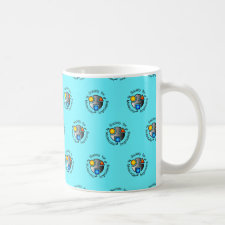
Authors: Darabi HR, Talebian S, Aghapoor K, Eghbali N, Mohsenzadeh F, Ballavar Y
Article Title: Synthesis and evaluation of a molecularly imprinted polymer nanospheres for the effective recognition of azithromycin.
Publication date: 2012
Journal: Drug Discovery International
Volume: 1
Issue: (1)
Page numbers: Art 19.
Alternative URL: http://www.drugdiscovery.ch/ojs/index.php/ddt/article/view/19
Abstract: Molecularly imprinted polymers (MIPs) are produced by forming a polymer around a molecule that is used as the template. Upon removal of the template, molecular holes remain which are specific in shape and size to the target molecule. Azithromycin is one of the world's best-selling macrolide antibiotic which its environmental and medical concerns makes it as a suitable template. In this work, a library of molecularly imprinted polymers (MIPs) was synthesized by various radical polymerization methods using the azithromycin as the template. Diversity of the library was obtained by combining various functionalized monomers and cross-linkers and by varying the stoichiometry and the concentration of the components in the prepolymerization mixtures. On the basis of binding analysis, the MIPs with 1:6 optimum ratio of template to monomer were selected for subsequent scanning electron microscopy and Brunauer-Emmett-Teller analyses, which indicated that the MIPs had more convergent porous structures than the non-imprinted polymers. MIPs size ranges from 150 to 250 nm (Figure 1). Adsorption capacity and recognition selectivity toward azithromycin were studied using ultraviolet spectroscopy. As shown in figure 2, the results show that the amount of azithromycin adsorbed by MIPs is 18 times greater than non-imprinted polymers (NIPs). The effect of different parameters, such as pH, adsorption and desorption time, type and least amount of the eluent for elution of the azithromycin from polymer were also evaluated. The synthesized polymer particles both prior to and after leaching have been characterized by IR, BET and X-ray diffraction and scanning electron microscopy. Taken collectively these results indicated that imprinted nanospheres can be considered promising systems able to release and afterwards rebind template molecules without the need of drastic extraction procedures to liberate the recognition cavities in the nanospheres.
Template and target information: azithromycin



Join the Society for Molecular Imprinting

New items RSS feed
Sign-up for e-mail updates:
Choose between receiving an occasional newsletter or more frequent e-mail alerts.
Click here to go to the sign-up page.
Is your name elemental or peptidic? Enter your name and find out by clicking either of the buttons below!
Other products you may like:
 MIPdatabase
MIPdatabase









